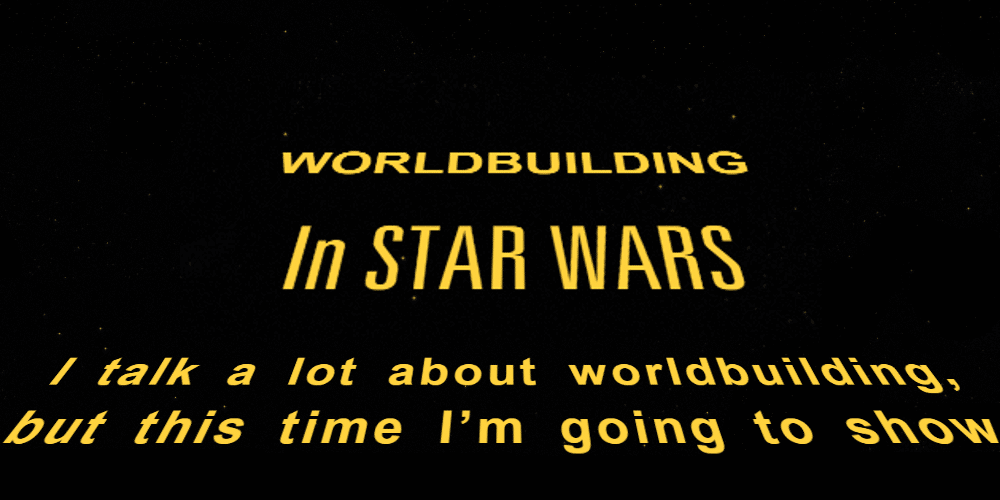I talk a lot about worldbuilding, but this time I’m going to show how it is conveyed in an example that (nearly) everyone is familiar with: Star Wars. Since it’s a well-known fictional universe, I’m not going to explain the what of the worldbuilding as much as the how. While it’s important to have a cogent and believable world, it can be just as important to convey all of that properly to a reader or viewer. Let’s take a look at four key elements of the Star Wars universe and see how those are presented.
Government
The first sequence of Star Wars does two things succinctly. One of these is presenting the central conflict of the series. Princess Leia’s ship is captured, and there is an exchange between her and Darth Vader. In that interrogation, Vader accuses her of working with rebels, being a traitor and a spy, and being a courier for stolen plans (for the Death Star).
What has this done? It’s set the stage for a fight against an oppressive regime. What is the grievance? How long has this conflict being going on? Who are the political movers and shakes on both sides? … Who cares? None of those factors play much of a role in the conflict presented, yet you already know enough to realize that the Rebel Alliance are the sympathetic side. The heroes and villains are even color coded to make it obvious (Star Wars isn’t the sort of film to subvert tropes; it points the nose of the ship at them and hits hyperdrive).
Technology
The second thing the opening sequence does it gives a rundown of the technology that will be present in the series. Technologies introduced include:
- Starships
- Blasters
- Holographic recording
- Droids
Really, aside from lightsabers and tractor beams, there’s not a whole lot else you need to know about the technology of Star Wars to know what to expect throughout the series.
Magic System
One of the easiest ways to introduce a magic system is to have a complete neophyte learn it. The reader/viewer can follow along with that education and learn everything they’ll need to know for the remainder of the story. In Star Wars, Luke meets Obi-Wan, who teaches him about the Force. We get the top-down view of what the Force is, and get drip-fed more tidbits about it throughout the story. This continues throughout the series.
Cultures
Though painted with a broad brush, Star Wars presents a dichotomy: a uniform, tight-laced, homogeneous Empire and the multicultural chaos of the rest of the galaxy. Luke’s Uncle Owen bargains with jawas, each of them speaking their own language. The Mos Eisley cantina scene not only pulls our hero out of his element, but it shows off the diversity of alien life that coexists in the galaxy. Han and Chewbacca’s friendship shows that species don’t keep exclusive company with their own kind.
Smaller elements come into play as well. The cantina music shows a little pop culture (however watered down to have mass appeal with multiple races). The holographic chess-like game on board the Millennium Falcon highlights a form of entertainment. While minor in the grand scheme, these little details contribute to the overall impression of a real, lived-in galaxy.
In the end, that’s your goal: make a person believe that your fictional universe exists. Star Wars has had superlative success in this area.


Clear and concise – thanks J.S.!